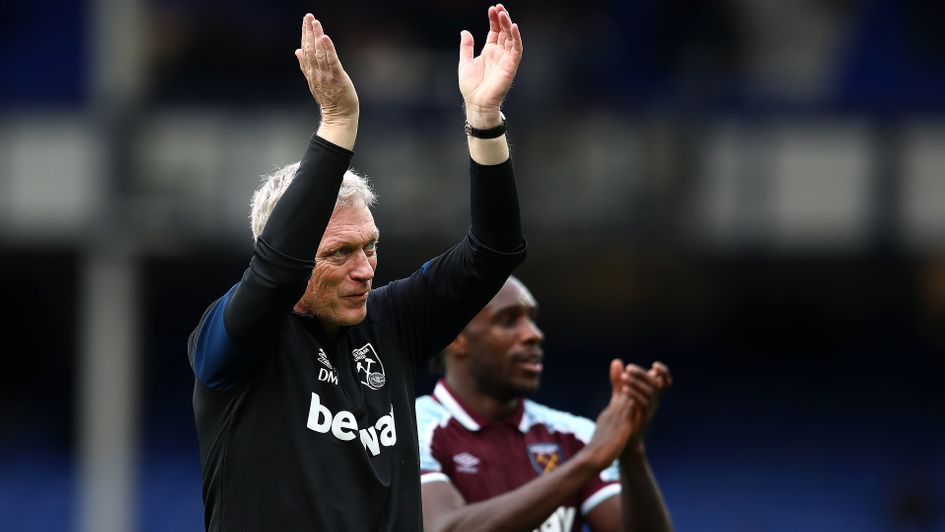Nuno Espirito Santo's reign at Tottenham Hotspur was always destined to fail.
He was the wrong manager at the wrong time, fatally undermined by being the club's fifth or sixth-choice appointment and deploying a tactical system alarmingly similar to that of his predecessor Jose Mourinho.
In the end, it was even worse than we imagined it would be. Reports have emerged this week suggesting he rarely spoke to his players and that even those in the first XI did not understand what was expected of them.
It seems as though Nuno was paralysed, lacking the conviction to implement the reactive counter-attacking system he prefers and instead drifting in limbo: dominating possession but having no idea what to do with it.
Third time lucky for Levy
What Daniel Levy has clearly misunderstood in his pinball appointments of Mourinho and Nuno following Mauricio Pochettino is that Premier League football has changed significantly in the last five years.
Big clubs can no longer improvise their attacks, can no longer rely purely on defensive or counter-attacking football.
They are forced to dominate the ball, and therefore must employ a manager from the new school of highly-choreographed possession, of structured attacks in which every pass and every movement is drilled relentlessly on the training ground.

And so Nuno was never going to work. It was a hospital pass from Levy but nevertheless Nuno lacked the personality, or the coaching, to understand his task in north London.
It is an era that will not be remembered for long; an interim appointment in all but name, swatted to one side by the explosive tenure that came before and, quite possibly, a sensational one coming next.
Just when it looked like years of mismanagement had led Levy's Spurs to their inevitable trajectory of being just another top-ten club, lingering alongside the likes of West Ham and Everton, a miracle has happened.
No ceiling for Spurs under Conte
Antonio Conte isn't just a world-class manager and genius tactician. He also happens to be the godfather of football's new frontier, the first person to win the Premier League title in this new era of fine-tuned possession football.
His success with Chelsea in 2016/17, alongside the arrival of Jurgen Klopp and Pep Guardiola, ushered in this new tactical landscape.
Spurs have hit the jackpot and, out of nowhere, the only ceiling on what they can achieve is the depth of Levy's pockets and the extent to which Fabio Paratici – who worked with Conte for three years at Juventus – can act as a buffer between the hot-headed manager and a ruthless, irritable chairman.

Conte is often wrongly labelled a counter-attacking manager, which he categorically is not. During his time at Chelsea, the German gegenpressing model was in vogue and therefore Conte's lower block – his relative disinterest in chasing the ball – saw him labelled as a conservative.
But now that we are in a calmer era, when table-topping Chelsea are managed by a coach who doesn't gegenpress, it is more widely accepted that possession and pressing are not inextricably linked.
Spurs fans can get ready for some exciting attacking football.
The players had better prepare to work harder than they've ever worked before.
We know what to expect from demanding Conte
Like all of the best coaches in the world in 2021, Conte demands absolute perfection when in possession.
The movement and positioning of his players is drilled relentlessly, his drill-sergeant approach ensuring the pattern of play is choreographed with a precision that could not be further from the Nuno era.
The Spurs players certainly won't be confused. They will know exactly what to do, while anyone shirking responsibility or hard work will be quickly thrown out.
The exact mechanics of what these attacking moves will look like is easy to know, because for Conte they don't tend to change between clubs.
📜🏴 Antonio Conte's Chelsea in their 16/17 title winning season:
— Sporting Life Football & Infogol (@InfogolApp) November 2, 2021
‣ 30 wins
‣ 3 draws
‣ 5 defeats
‣ 85 scored (63.7 xGF)
‣ 33 conceded (33.2 xGA)
‣ 7 point winning margin
‣ Top scorer: Diego Costa - 20 ⚽️ (16.67 xG), 7 🅰️ (4.08 xA)
🥈 FA Cup runners up
👑 #THFC | #CFC pic.twitter.com/O02ITjup1K
At Juventus, Chelsea, and Inter Milan he used a 3-4-3 or 3-4-1-2 with attacking wing-backs flying forward; a deep-lying playmaker and a box-to-box midfielder digging in; a strike partnership working on the shoulder; and a ball-playing back three beginning the complex interplay.
Compression is achieved largely by holding shape rather than pressing, but Conte teams will invariably pass through the lines in order to draw the opposition forward and create gaps for sudden changes of tempo; for direct attacking moves that give the impression of a counter-attack despite being built from their own goal-kicks.
Many of the current Spurs squad played under Pochettino, whose similarly demanding methods suggest the team will be up for the challenge of working hard and following rigid instructions, and indeed as long as Conte can overcome the issue of altering Spurs' tactics mid-season there is every reason to believe the team is well-suited to the new approach.
Spurs squad suit Conte clarity
Harry Kane and Heung-Min Son make obvious sense as a Conte strike partnership, while Dele Alli could excel as the playmaker just behind these two.
Tanguy Ndombele and Pierre-Emile Hojbjerg have the battling spirit and tactical intelligence to suffer for the team in the middle. Cristian Romero was at his best in a back three at Atalanta. Sergio Reguilon and Emerson Royal are attack-minded wing-backs at heart.
That we can so quickly name Conte's master-plan and the players most likely to fit the shape is, in itself, sign of progression.
Under Nuno, Spurs looked clueless, lacking an obvious strategy or a coach with the leadership skills to get the most out of a set of players who – judging by the stark difference between the Pochettino era and the last 12 months – crave boundaries, craze strict parenting.
Conte will certainly provide that, and as one of the top five coaches in the world he should even convince Kane to believe in the project again.
In one swift 180-degree turn, Tottenham have gone from the periphery of the top six to a dark horse for the Premier League title in 2022/23.









